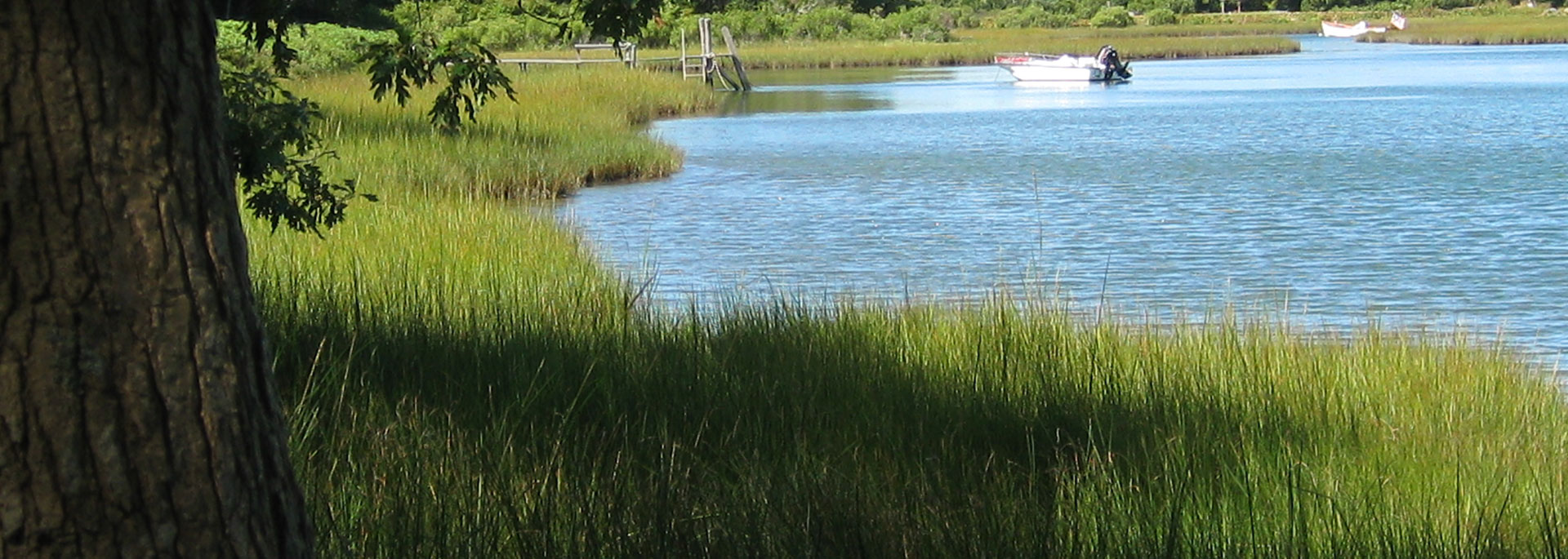Programs
Stewardship
MV Natural Communities
Sandplain Grasslands
Sandplain grasslands are a globally rare natural community visually dominated by grasses, although forbs (non-woody flowering plants) and woody shrubs are also important components of the community. Sandplain grassland communities occur on flat outwash plains with dry, low-nutrient soils, generally near the ocean, where they are influenced by winds and storm blown salt spray. Dominant plants are little bluestem grass, Pennsylvania sedge and poverty grass (Danthonia spicata). Shrubs, such as black huckleberry, bayberry and lowbush blueberry, often form large patches. As a group, goat’s rue, yellow wild indigo, butterfly weed and bird’s foot violet are good indicators of this natural community.
Sandplain grasslands provide habitat for numerous rare species. The Massachusetts Natural Heritage and Endangered Species Program lists 14 plants and 10 animal species on the Massachusetts Rare and Endangered Species list that are associated with this community. Major threats to sandplain grasslands include non-native invasive species, and succession to woodlands.
Frostbottoms and Rare Moths
Sheriff’s Meadow Foundation is fortunate to be able to protect two frostbottoms. One frostbottom is located on land of the Vineyard Golf Club, where Sheriff’s Meadow Foundation holds a conservation restriction. Another frostbottom is located at our Pocketapaces property in Edgartown.
Frostbottoms are unique geological features that were formed by melting glaciers 15,000 years ago. They are depressions in the land, and are often extensions of the coves of the great ponds on the island’s south shore. Since cold air is heavier than warm air, cold air flows down into these depressions at night, pooling in the lowest parts. This means that frostbottoms can have frost any day of the year.
On the other hand, where frostbottoms lack tall shade trees, frostbottoms get very hot on sunny days. If the frostbottom is functioning properly, temperature fluctuations of greater than 70 degrees Fahrenheit can occur during one day. These extremes make the frostbottom an inhospitable environment for most plant species. As only the hardiest plants can survive, frostbottoms are commonly dominated by scrub oak. Because frequent frosts make it very difficult to grow agricultural plants, frostbottoms on Martha’s Vineyard are thought to be a habitat that was never cultivated. Since they were never plowed, they are generally in more pristine condition than other island habitats.
The combination of no plowing and a dynamic temperature regime has created important habitat for many rare species, especially moths. More than 10 species of moths that are listed in Massachusetts as being Endangered, Threatened or of Special Concern have been recorded in the Vineyard Golf Club frostbottom. These moths not only survive under these harsh conditions, but actually appear to depend on frostbottoms to reproduce. Most of these frostbottom obligates have two characteristics in common:
- They are summer flyers at the extreme northern edge of their range; and
- Scrub oak and other oak species are common larval host plants.
These more southern species face an unusual dilemma. The moths needs warm temperatures to fly about, find a mate and start the next generation. On the other hand, since oak leaves quickly develop tannins that make them difficult to digest and limit their nutritional value, the caterpillars need new tender leaves that are rich in nitrogen.
Due to the extreme nighttime temperatures in the frostbottom, the scrub oaks growing there don’t leaf out until June or sometimes even July. By then, the air temperature is warm enough for the moths to fly. By feeding on these late-growing oak leaves in the frostbottom, the caterpillars get the best of both worlds: nutritional food that allows them to grow rapidly and change to the moth stage at a time when the air temperature is high enough for them to fly at night, mate and lay their eggs.






